DAY5 Madagascar
Road trip🇲🇬
Antsirabe
Antsirabe (Malagasy pronunciation: [anˌtsiraˈbe]) also known as Ville d'eau is the third largest city in Madagascar and the capital of the Vakinankaratra region, with a population of 265,018 in 2014. In Madagascar, Antsirabe is known for its relatively cool climate (like the rest of the central region), its industry and the high concentration of pulled rickshaws or pousse-pousse. It attracts around 30,000 tourists a year.Architecture
Several buildings in central Antsirabe date back to the first decades of the 20th century. These include the thermal bath centre (opened in 1917), Hôtel des Thermes (1922), the railway station (1923), and the residence for French retirees (1934).
Our Lady of La Salette Cathedral, Antsirabe
A small clay church had been established by French priest Father Dupuy prior to 1900. At the start of the century the missionaries of Our Lady of La Salettearrived in Antsirabe and in 1908 built a church that was 22 meters long, 16 meters wide, 8 meters high, with a bell tower 14 meters high.
In 1921 with the establishment of the Diocese of Antsirabe, Monsignor François Dantin ordered that a new church would be built, as the previous one was too small for the growing Catholic population in Madagascar. Dantin also ordered that this church would be the cathedral for the new diocese.
The present day church stands 60 meters long, 16.77 meters wide, 14 meters high. Its bell tower has a height of 45 meters.
In 2005 the parish celebrated its 75th anniversary.
During Morning rush hour in front of the church
Within the city public transport consists of small buses and numerous pulled rickshaws ("pousse-pousse"), as well as cycle rickshaw ("cyclo-pousse"), auto rickshaw("touktouks") and private taxis. The pousse-pousse is something of an emblem of the city; 5600 of them were recorded in 2006.
There is also an airport.
Nowadays, although the rickshaw is still used as a mode of transport in some regions of Madagascar, it has largely been replaced by more modern means of transportation such as pedicabs and motorcycles. However, it remains a powerful symbol of the island’s history and culture, reminiscent of a bygone era.

National road 7 (RN7) connects the city to Antananarivo in the north and to Fianarantsoa and Toliara to the south. Antsirabe is connected with Morondava on the west coast through RN34 and RN 35. Public transport to and from Antsirabe are provided by taxi-brousses (share taxis) and buses. Most taxi-brousses operate from the main bus station in the north of the city.
This morning I felt like it was the most beautiful morning since I arrived in Madagascar. I saw the landscape of the warm and lively hillside fields, with people working in the fields around their homes.
Local innovations
In 1867, restrictions were relaxed on the aristocracy's use of stone and brick as building materials, before all restrictions on construction were abolished in 1869 by Queen Ranavalona II, who had already commissioned Jean Laborde in 1860 to encase the exterior of her wooden palace at the Rova in stone. The building took its final form in 1872 after James Cameron added stone towers to each corner of the palace.[12] The queen converted to Christianity in 1869 and that same year the London Missionary Society commissioned James Cameron to construct a private home for its missionaries. He drew his inspiration from the work of Gros and Laborde to develop a multi-story wooden house with veranda and columns. This model exploded in popularity throughout Antananarivo and surrounding areas as an architectural style for the aristocracy, who had to that point continued to inhabit simple homes similar to the wooden palace of Andrianampoinimerina at Ambohimanga. These newly favored brick houses often featured shortened tandrotrano and elaborately carved verandas.[12]These homes can naturally range in color from deep red to almost white depending on the characteristics of the earth used in its construction.
 Over time, and particularly with the colonization of Madagascar by the French, these earthen houses (known as trano gasy – "Malagasy house") underwent constant evolution.The simplest form of earthen house is one or more stories tall, rectangular, and features a thatched roof with slightly overhanging eaves to direct rain away from the foundation and thereby prevent its erosion. Wealthier families replace the thatch with clay roofing tiles and construct a veranda on the west face of the building supported by four slender equidistant columns; this design is even more effective at protecting the building's foundations from the eroding effects of rainfall.Further expansion often entails the enclosure of the western veranda in wood and the construction of an open veranda on the eastern face of the building, and so forth, leading to wrap-around verandas, the connection of two separate buildings with a covered passage, the incorporation of French wrought-iron grills or glass panels into verandas, the application of painted concrete over the brick surface and other innovations.In suburban and rural zones, the ground floor of the trano gasy is often reserved as a pen for livestock, while the family inhabits the upper floors.The entrance typically faces west; the kitchen is often to the south, while the family sleeps in the northern part of the building. This configuration is consistent with that seen in the traditional Zafimaniry houses and reflects traditional cosmology.
Over time, and particularly with the colonization of Madagascar by the French, these earthen houses (known as trano gasy – "Malagasy house") underwent constant evolution.The simplest form of earthen house is one or more stories tall, rectangular, and features a thatched roof with slightly overhanging eaves to direct rain away from the foundation and thereby prevent its erosion. Wealthier families replace the thatch with clay roofing tiles and construct a veranda on the west face of the building supported by four slender equidistant columns; this design is even more effective at protecting the building's foundations from the eroding effects of rainfall.Further expansion often entails the enclosure of the western veranda in wood and the construction of an open veranda on the eastern face of the building, and so forth, leading to wrap-around verandas, the connection of two separate buildings with a covered passage, the incorporation of French wrought-iron grills or glass panels into verandas, the application of painted concrete over the brick surface and other innovations.In suburban and rural zones, the ground floor of the trano gasy is often reserved as a pen for livestock, while the family inhabits the upper floors.The entrance typically faces west; the kitchen is often to the south, while the family sleeps in the northern part of the building. This configuration is consistent with that seen in the traditional Zafimaniry houses and reflects traditional cosmology.
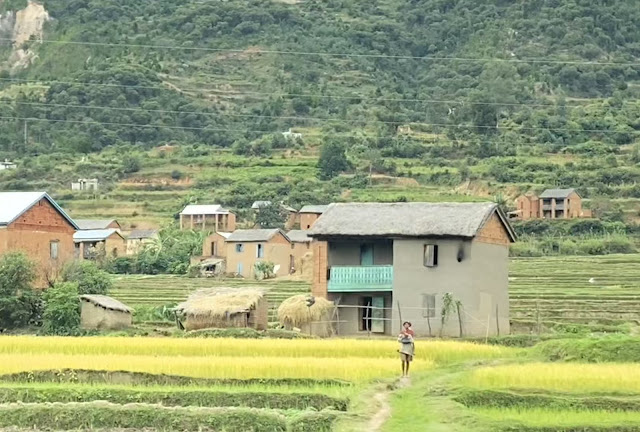 |
| Trano gasy: In rural areas, simplified brick houses retain the two stories but may lose the veranda and obscure the supporting columns |
Their house is a big house, but there is no road to the house. They mainly use walking, no need for vehicles.
Their fields are fertile with abundant water from streams and waterfalls flowing down from the mountains in the distance.
 |
| Houses made of mud covered with straw |
Because of their ubiquity, rice fields are part of the landscape of Madagascar, except in the extreme south where the climate is arid. These endless green fields draw stunningly beautiful geometric lines across the land. The Betsileo region is considered the rice granary of the island; it is famous for its incredible rice terraces dotted with clusters of bright-coloured houses throughout.
Fianarantsoa is a city (commune urbaine) in south central Madagascar, and is the capital of Haute Matsiatra Region.
Labord's chameleon
 The species is endemic to dry and deciduous forests, including spiny forests, in lowlands of western Madagascar, at altitudes of 20–100 m (66–328 ft). It is considered vulnerable because of ongoing habitat loss.
The species is endemic to dry and deciduous forests, including spiny forests, in lowlands of western Madagascar, at altitudes of 20–100 m (66–328 ft). It is considered vulnerable because of ongoing habitat loss.Calumma
Brookesia nana










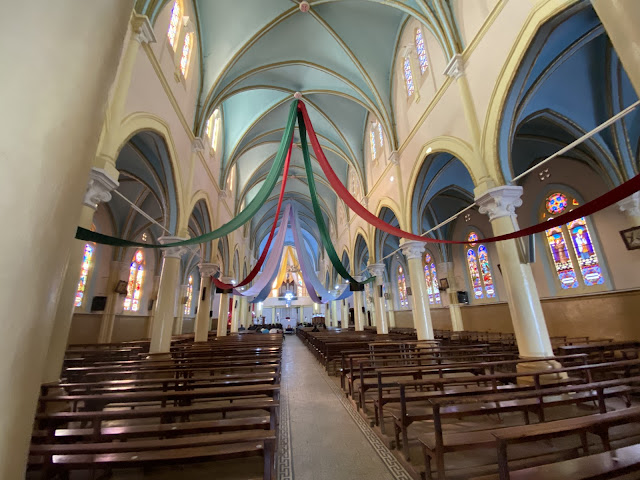










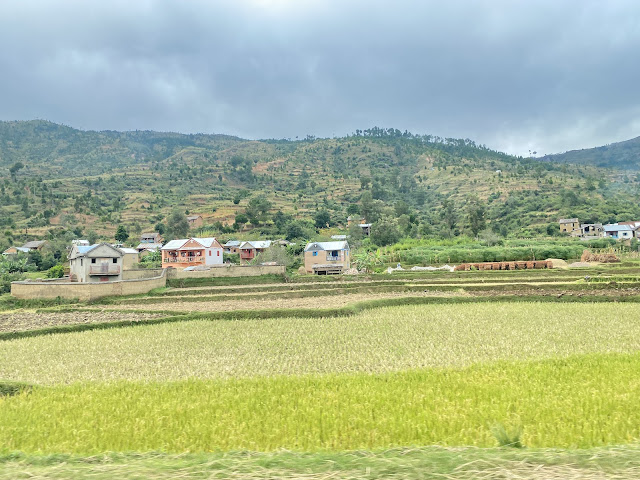







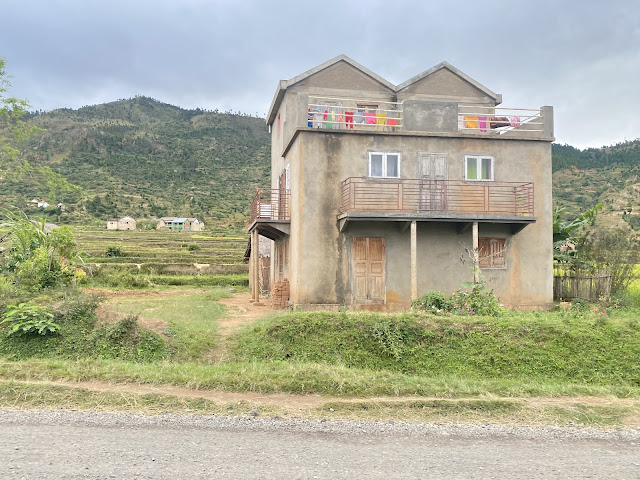


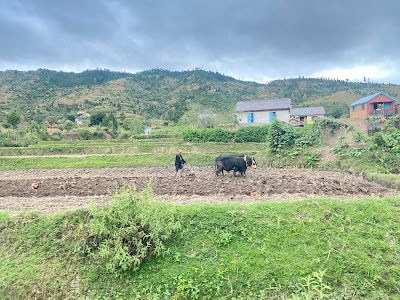





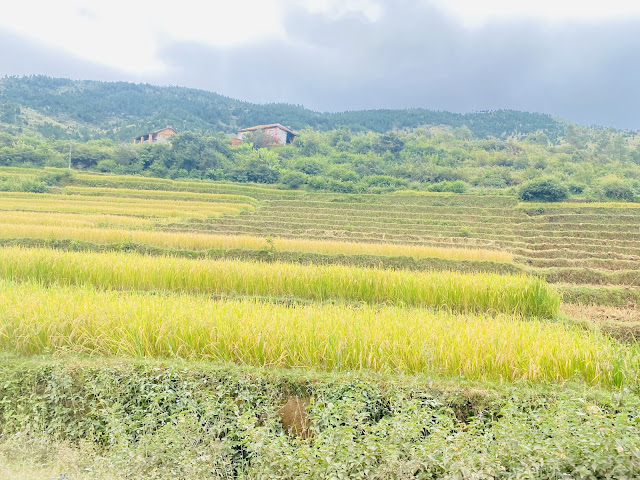










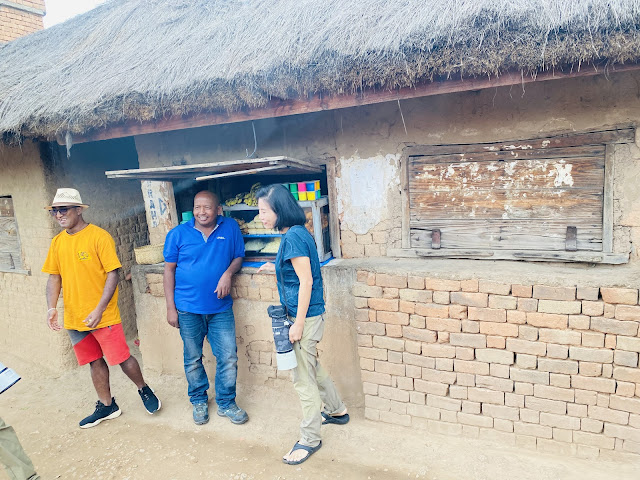








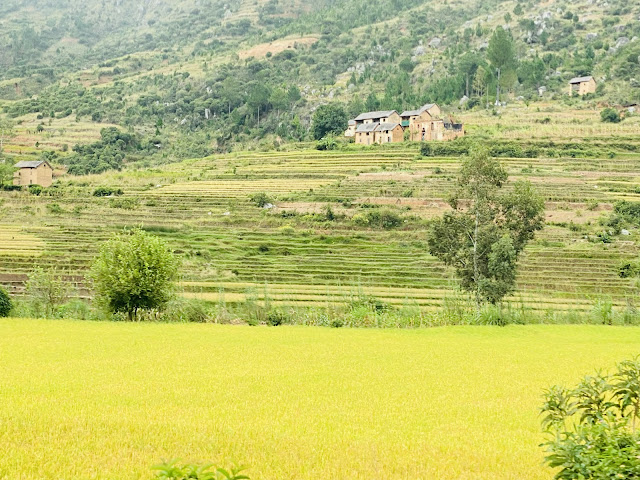



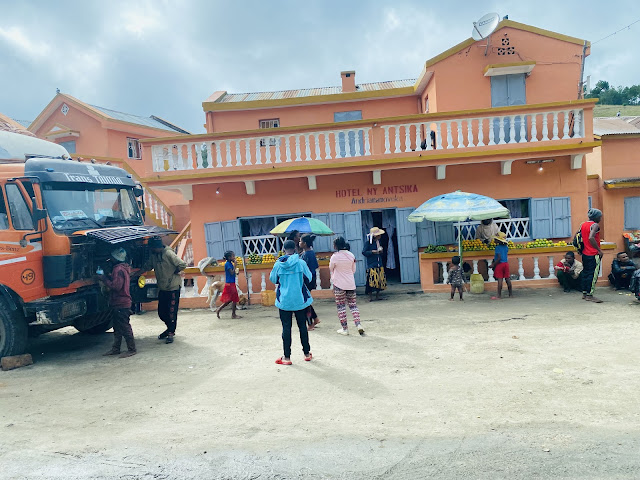








































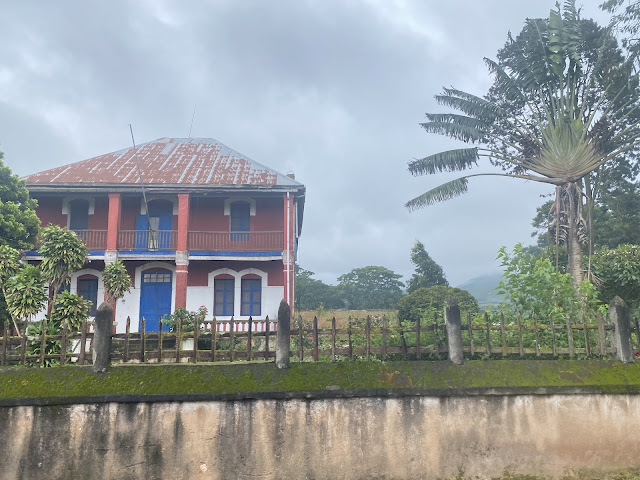










ไม่มีความคิดเห็น:
แสดงความคิดเห็น